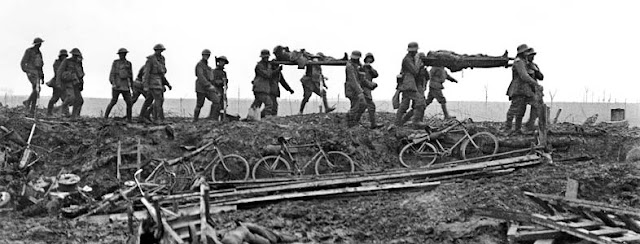The fighting in World War 1 ended at 11am on 11 November 1918. However, the deaths and suffering did not end. More than eighty years later the cost of the war is still with us, the losses are still being felt by families and friends. During 1918, people became more aware of the general effects of war. There seemed to be no real victors of The Great War and the economic costs continued to upset many in the community.
All soldiers were impacted in some way; they were very different from those who had left several years earlier. Some wives, mothers, sisters and girlfriends couldn’t recognise their men as they came down the gangway. The injuries, disease, stress, poor food and living conditions had taken their toll. The diggers were exposed to a whole new way of life as the war broadened their horizons.
After the soldiers returned home, the countries involved in the war changed greatly:· The Government suffered the burden of supplying jobs for returned soldiers.
· Population declined due to great numbers of casualties.
· Food shortages were a problem in many parts of Europe.
· Political parties split causing lack of leadership.
· Trade union membership almost doubled from 1915 to 1920—years of war and post- war economic boom.
· Technology experienced a great boost after the war, such as the production of automobiles, airplanes, radios, etc.
By 1914, Australia’s population was less than five million, nearly half a million of whom had been recruited. Sixty-one thousands Australians never came home and two out of every three men sent to war were injured.
In the aftermath of World War I, thousands of families throughout Australia mourned the loss of a loved one who went off to war, never to return. Graves and memorials were built in honour of the soldiers. 



